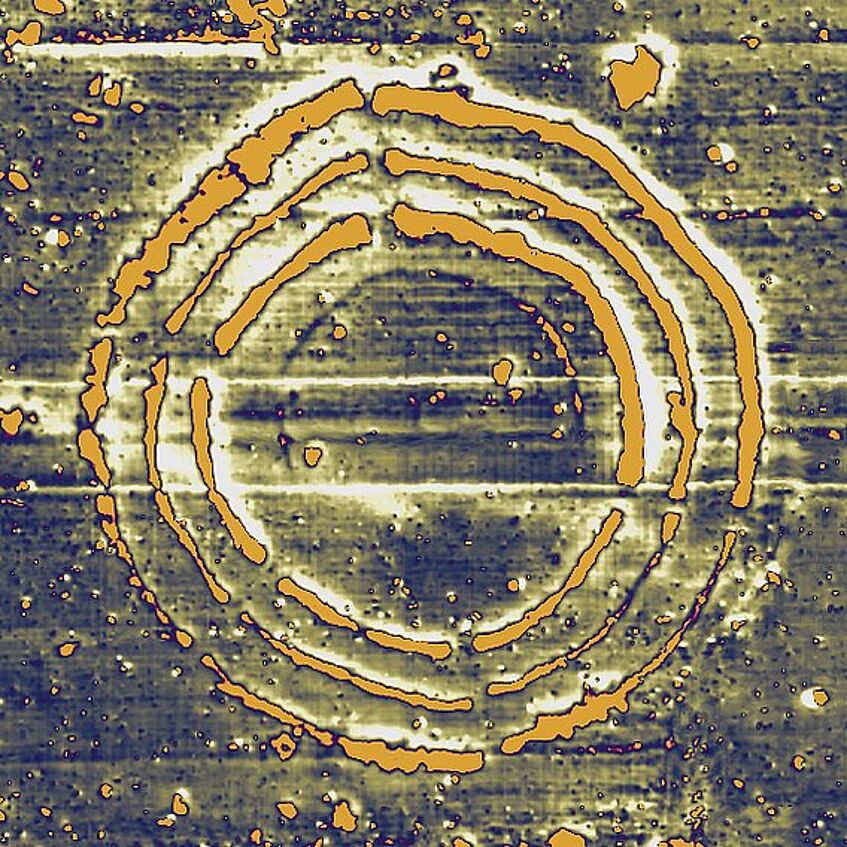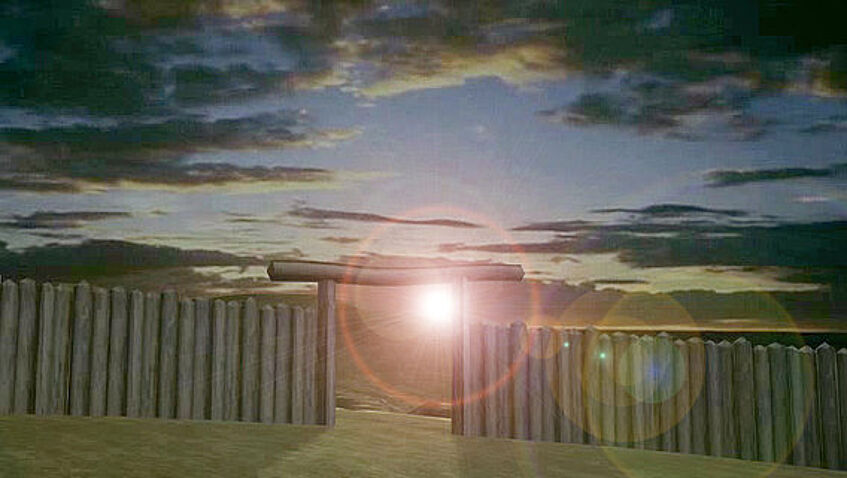KGAs - Monuments from the Middle Neolithic
The KGA´s, circular ditch systems from the Middle Neolithic (4800-4500 BC), are a phenomenon well known in the archaeological prospection community. The striking aerials and magnetograms from Germany, Slovakia, Hungary, Czechy and especially from Austria invoked high public interest in these monuments and the unsolved problems behind them. From 2003 - 2005 the team Archeo Prospections from Vienna prospected all known monuments of this period in Austria. The data collected systematically (aerial orthophotographs, DTM´s, magnetograms, cadastral and hydrological data, pedological data) during three field campaigns formed the basis of various additional research projects focussing on the three dimensional modelling of the magnetic data and the archaeological interpretation. For archaeological interpretation it became crucial to look for new ways of reasoning as well as the verification of various hypotheses flickering around in the professional as well as the lay men scene as the monuments and the prehistoric period had to be presented in a county exhibition in 2005 and recent scientific documentations.

Magnetogram of the Middle Neolithic KGA Glaubendorf 2, Lower Austria
This was an important impetus for developing strategies to go beyond the standard of interpreting geophysical or aerial evidence. The monuments had to be placed in the landscape. Their surrounding had to be taken into account and as we expected, the monuments were situated in the settlements. The combination of all data in a GIS formed the primary inference machine. Building high quality 3D models of the sites situated in the landscape was the next logical step. Combined with well defined small excavation campaigns it was possible to come to impressive virtual reconstructions to be explored using virtual reality devices. Still far away from the time machine the virtual world was a helpful tool for the forming of new hypotheses on the function of these oldest monumental buildings from Middle Europe unifying various culture groups defined by material remains. The extended prospection work showed that there are many similarities as well as many differences comparing the monuments in layout, size and shape. But there must have been an idea behind which was spread in a very short time all over Middle Europe. Time, the next dimension that became important was investigated by radiocarbon dating of nearly 100 samples, showing the existence of these monuments in a very short period of time. They appear suddenly to disappear some 150-250 years later. So what happened in and outside of the monumental ditches, what was the function of these monuments? One of the most discussed theories is the astronomical aspect of this type of monuments giving them ritual as well as calendrical function. Another problem, to solve only in space and time and best in the virtual world by reconstructing not only the Earth surface but also the heaven. The tight analysis of the virtual reconstruction by animating the Middle Neolithic scenery of rising sun, moon and stars gave us striking arguments for a new discussion and new input for a new research project (ASTROSIM) investigating the fascinating monuments.

Sunrise at the KGA Steinabrunn
